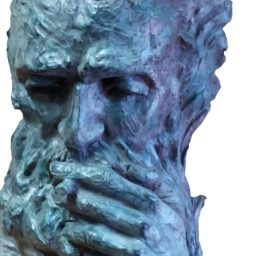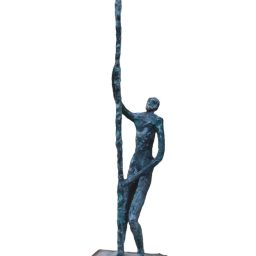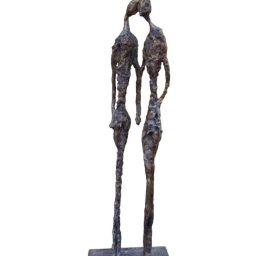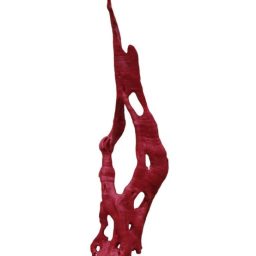Tarantino's artistic training began during adolescence, thanks to the influence exerted by his closest family members, especially his brother and father. In fact, he was struck by some wooden sculptures made by his brother Pino (with brilliant skills also in the field of painting) and by the sculptures with floral shapes, in Lecce stone, created by his father, a mason, to embellish friezes of portals or chimney architraves, to complete the wall structures. It soon opened up to multiple interests and showed a great curiosity for the discovery of beauty and the charm inherent in nature. He first tried to model faces using clay, a soft and easily malleable material, and then moved on to harder materials such as Lecce stone and olive wood.
Subsequently, he attended an afternoon course of papier-mâché at the "Società Operaia E. Maccagnani" in Lecce, where he deepens his first knowledge on the use of poor materials, for the creation of typical works of the sacred art of Salento, on the modeling of the clay parts (head, hands, feet of papier-mâché figurines) and on the realization of plaster casts.
These first experiences in the artistic field culminate in participating in a group exhibition in Sternatia with the exhibition of some of his creations. Meanwhile, he moved to Modena, where he began his military career and the artistic inspiration was temporarily put aside, although every time Tarantino returned to Salento he dedicated himself to new studies, inspired by the works of art of the great artists of the '900. The influence of Cubists such as Braque, Metzinger and Picasso, the surrealist Dali, Modigliani and Toulouse-Lautrec was not long in making itself felt. In fact, Tarantino creates some paintings in homage to the aforementioned artists and the first sculptures in Lecce stone, inspired by the legendary heads of Modigliani.
In 1996, as an Officer of the Engineers of the Italian Army, he is on a humanitarian mission in Bosnia, where he is engaged in the construction of road and rail bridges and paved roads, when he receives the commission from the municipal administration of Sternatia to sculpt a bust in honor of the peasant poet Cesare De Santis, for the tenth anniversary of his death. The work, made in terracotta, is then cast in bronze at a foundry in Rome and placed in the chosen square of the village.
In the following years he participated in group exhibitions in Rome and Sternatia with great success despite his tendency to hide his talent, perhaps because of an excess of modesty or because he did not attend an art school. However, he continues to experiment and research, animated by a strong sensitivity towards beauty, sometimes translating into sculptures the paintings or drawings of other authors, thus giving you a different and undoubtedly original perspective. In this regard, his sculptures in homage to Magritte, Picasso and Lucian Freud and some "ready made" inspired by Marcel Duchamp are interesting.
Some design ideas are also from this period and he develops them with simple materials: we mention, for example, the table mounted on bicycle forks. These experiences represent an important path of growth and maturation that culminates, in the years 2014-18, with the attendance of a school of Arts and Crafts in a country of Belgium, where he is to carry out a position at the Supreme Command of NATO in Europe. Here he met some local artists from whom he learned or deepened some operational techniques. The "Self-portrait" and the "Bust of his brother Pino" date back to this period. Back in Italy, in the years 2021-22, his talent evolves towards a new form of art: the "nature made", or compositions that nature has shaped and that fire has dug into abstract and imaginative models. In this new dimension, Tarantino intends to preserve the intrinsic beauty in a work already prepared and fully realized by random events, thus supporting nature – which fascinates and restless, but certainly is an invoice of Art – and in it it seems that the miracle of the "angelic butterfly" is renewed. The sculptor, in this case, limits himself to identifying that soul – the angelic butterfly – and to make it independent of the body (consumed and shaped by fire, but rooted in the ground) to revive it again, thus making it immortal, almost eternal.
CURRICULUM
Events at Rome Art Week
Free access
2024
Free access






